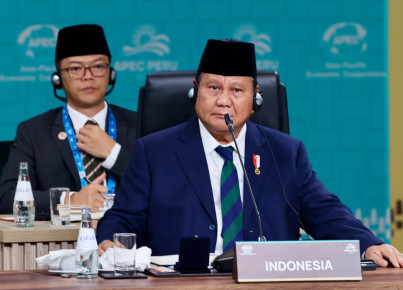Providing free and nutritious lunches will be the priority and, most likely, the legacy project of the new Indonesian President, who has launched a plan worth almost $45 billion dollars.
By Anna Affranio
Indonesia has launched an ambitious nationwide initiative to provide highly nutritious meals to nearly 83 million people by 2029, initially focusing on school-age children, pregnant women, and breastfeeding mothers. This program has been strongly supported by the new president, Prabowo Subianto and it was a cornerstone of his election campaign and undoubtedly contributed to his victory in the February 2024 elections, exactly one year ago. In fact, unlike his predecessor, Joko Widodo (Jokowi), who prioritized infrastructure development, Prabowo has shifted the government's focus to human capital development. The free meal program, designed to be Prabowo’s signature initiative and political legacy, can be considered at the heart of this shift. The aim is to address two crucial issues: combating malnutrition (which affects 21.5% of Indonesian children under five) as well as increasing farmers’ income. By integrating nearly 2,000 cooperatives and collaborating with local producers to supply eggs, vegetables, rice, fish, and meat, the program is expected to create approximately 2.5 million jobs and stimulate demand for local products. The government has pledged to prioritize the poorest and most remote areas of the archipelago, where malnutrition remains a serious concern. According to UNICEF, in Indonesia, one in 12 children under the age of five is underweight, and one in five is stunted. Malnutrition is the main cause, which not only hinders physical growth but also affects cognitive development. In fact, Indonesian students have fallen behind their international peers according to recent PISA report studies.
The free meal distribution program was officially launched in Indonesia on January 6, 2025, providing one free meal per day for students from preschool to high school. These meals are designed to cover about one-third of children’s daily caloric needs and are served in reusable stainless steel containers. To ensure both nutritional value and cultural relevance, the meal content varies by region and available local ingredients. For example, in the Maluku and Papua islands, where rice is neither a staple food nor easily available, alternatives such as sago, a starch extracted from local palms, may be used. Each meal, free for students, is subsidized by the government at a cost of around 10,000 rupiahs (approximately 60 euro cents) per portion.
As it comes naturally for any policy of this scale, criticism has arisen. First of all, detractors warn that the projected cost could reach $45 billion over the program’s duration, which could strain Indonesia’s fiscal stability and worsen the balance of payments, given the country's heavy reliance on imports of staple foods such as rice, wheat, soybeans, beef, and dairy products. Others argue that alternative policies, such as improving the quality of nutrition for younger children, would have been a more strategic priority, as stunting often occurs before a child starts school. Lastly, there are significant logistical challenges in implementing such an ambitious project across a vast archipelago.
Although the long-term feasibility of the program remains uncertain, both politically and economically, it already appears to be a popular move. Many parents welcome the financial relief of not having to bear the costs of their children's school lunches. For now, the initiative represents a political victory for Prabowo, demonstrating his commitment to social welfare and his determination to keep his electoral promises.






